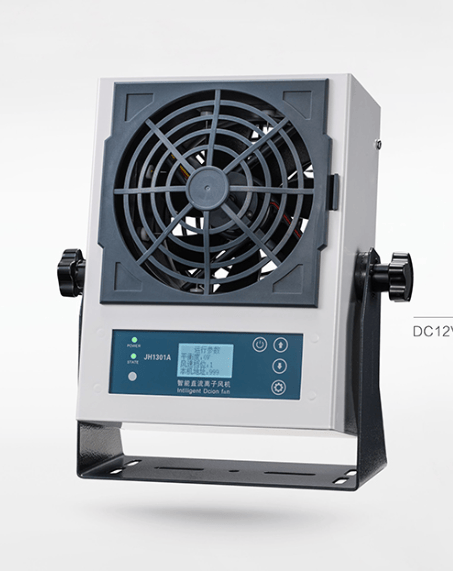what is a electrostatic discharge?

I:The Hazards of Static Electricity to Electronic Components and Protection Measures
The extent to which electronic components are damaged by static electricity varies depending on their type. Even a static voltage as low as 100V can cause damage. In recent years, as electronic components have become more integrated, the voltage threshold for damage has also continued to decrease.
Static voltages sensed by the human body typically range from 2 to 4 kV, usually caused by minor movements or friction with insulating materials. This means that if the static potential carried by the human body comes into contact with an IC, nearly all ICs may be destroyed. Such risks exist in any work environment where electrostatic protection measures are not in place. The damage static electricity causes to ICs occurs not only during the manufacturing process, but also during IC assembly, transportation, and other stages.
To address these issues, the following electrostatic discharge (ESD) protection measures can be implemented:
ESD Protection at the Worksite: Electrostatic-sensitive devices should be handled in ESD-protected areas.
Human Body ESD Protection: Operators should wear antistatic garments, gloves, shoes, caps, and wrist straps.
ESD Protection during Storage and Transport: Electrostatic-sensitive components must not be stored or transported while carrying an electric charge.
To achieve these functions, the basic approach is to reduce the voltage of charged objects to within a safe range defined by design. In terms of the equation, both the charge (Q) and resistance (R) should be low, and the capacitance (C) should be high:
V = I × R
Q = C × V
(Where V is voltage, Q is charge, I is current, C is capacitance, and R is resistance.)
Of course, resistance values should not be excessively low. In large-scale ESD protection zones, safety considerations such as leakage prevention must be factored in when selecting materials.
ESD Protection Measures
For IC inspection and installation in ESD-protected work areas, the purpose of these measures is to ensure that the entire working environment—including the operator—is at the same electric potential. Specific methods include:
Grounding through a 1 MΩ resistor and wearing antistatic wrist straps during operation.
Grounding all test instruments, tools, and soldering irons.
Covering work surfaces with grounded ESD mats.
Wearing ESD garments and footwear.
Laying down ESD flooring or conductive rubber floor mats.
Maintaining equipotential during IC transport and packaging.
Testing Cycle and Precautions for ESD Performance
ESD mats, flooring, shoes, garments, and turnover containers should be tested at least once per month. ESD wrist straps, ionizing guns, blowers, and instruments should be tested daily. During testing, factors such as ambient temperature and humidity should be taken into account.
II. what is the Main ESD Protection Methods ?
Static electricity is everywhere in our daily lives, and its hazards must not be ignored. Fortunately, there are many ESD (Electrostatic Discharge) protection methods available. Effective ESD protection revolves around four main principles: environmental control, personnel control, packaging material control, and personnel training.
Main ESD Protection Methods
1. Grounding
Grounding is essential for reducing the buildup of static charge on conductors. The human body, being a conductor and a major source of static generation, must be grounded when in contact with sensitive ESD components. The most effective way to prevent static buildup on the human body is through grounding.
Common grounding tools include:
Antistatic wrist straps
Grounded work surfaces
Common Grounding Tool: Antistatic Wrist Strap

2. Electrostatic Shielding
Static-sensitive components may be exposed to charged environments during storage or transportation. Electrostatic shielding helps minimize the effect of external static charges on these components. The most common method is using ESD shielding bags for protection.
Common Shielding Tool: ESD Shielding Bags
3. Ionization (Neutralization)
Grounding and isolation cannot remove static charge from insulators, which makes ionization a crucial part of the ESD protection strategy. Ionization refers to the process of neutralizing or removing naturally occurring charges on insulators during operations.
Ions are charged particles in the air, generated naturally by sunlight, lighting, open flames, and radiation. Ion generators (ionizers) produce trillions of ions using high voltage and distribute them with the help of fans to neutralize charged objects or areas.
Ionization can neutralize static charges on insulators within eight seconds, significantly reducing the potential for ESD damage. However, ionization is not a replacement for grounding or isolation; it only helps reduce the risk of electrostatic discharge incidents.
Common ionization devices include:
Ionizing air blowers
Ionizing air guns

III Management of Anti-Static Equipment in the Production Site
Anti-Static Facility Management in the Production Area
ESD-Safe Workstation:
An electrostatic-safe workstation typically consists of a workbench, anti-static mat, wrist strap connectors, and grounding wires.Wrist Strap Connectors:
The anti-static mat should have at least two wrist strap connectors—one for the operator and one for the technician or inspector.Prohibited Items on Workstations:
Plastic containers, erasers, cardboard, paper, glass, or other static-generating items should not be placed on the ESD-safe workbench. All documents and drawings should be stored in anti-static document folders.Anti-Static Wrist Strap:
Anyone who directly handles static-sensitive components must wear an anti-static wrist strap. The wrist strap must make good contact with the skin, and the resistance to ground should be 1MΩ.Anti-Static Containers:
Component storage bags, bins, PCB loading/unloading racks, and other containers in the production area must have ESD protective properties. Metal or regular (non-ESD) containers are not allowed. All containers must be grounded.Anti-Static Workwear:
Personnel entering the ESD-safe zone or handling SMD components must wear anti-static garments, especially in dry conditions (e.g., winter or when humidity is below 50%). The fabric must comply with national standards.ESD Footwear:
Personnel entering the work area must wear anti-static shoes. Those wearing regular shoes must use conductive shoe straps, ESD shoe covers, or heel straps.Conveyor Belts & Shafts:
Conveyor belts and shafts used on the production line should be equipped with ESD grounding brushes and rods.Ionizing Equipment:
Ionizing air blowers may be used on conveyor surfaces to eliminate static buildup.Grounded Equipment:
Assembly jigs, test fixtures, soldering tools, and all instruments used in the production area must be properly grounded.ESD Testing Station:
An ESD test station should be installed at the entrance of the production area. Every person entering must pass an ESD test before being allowed to enter.
